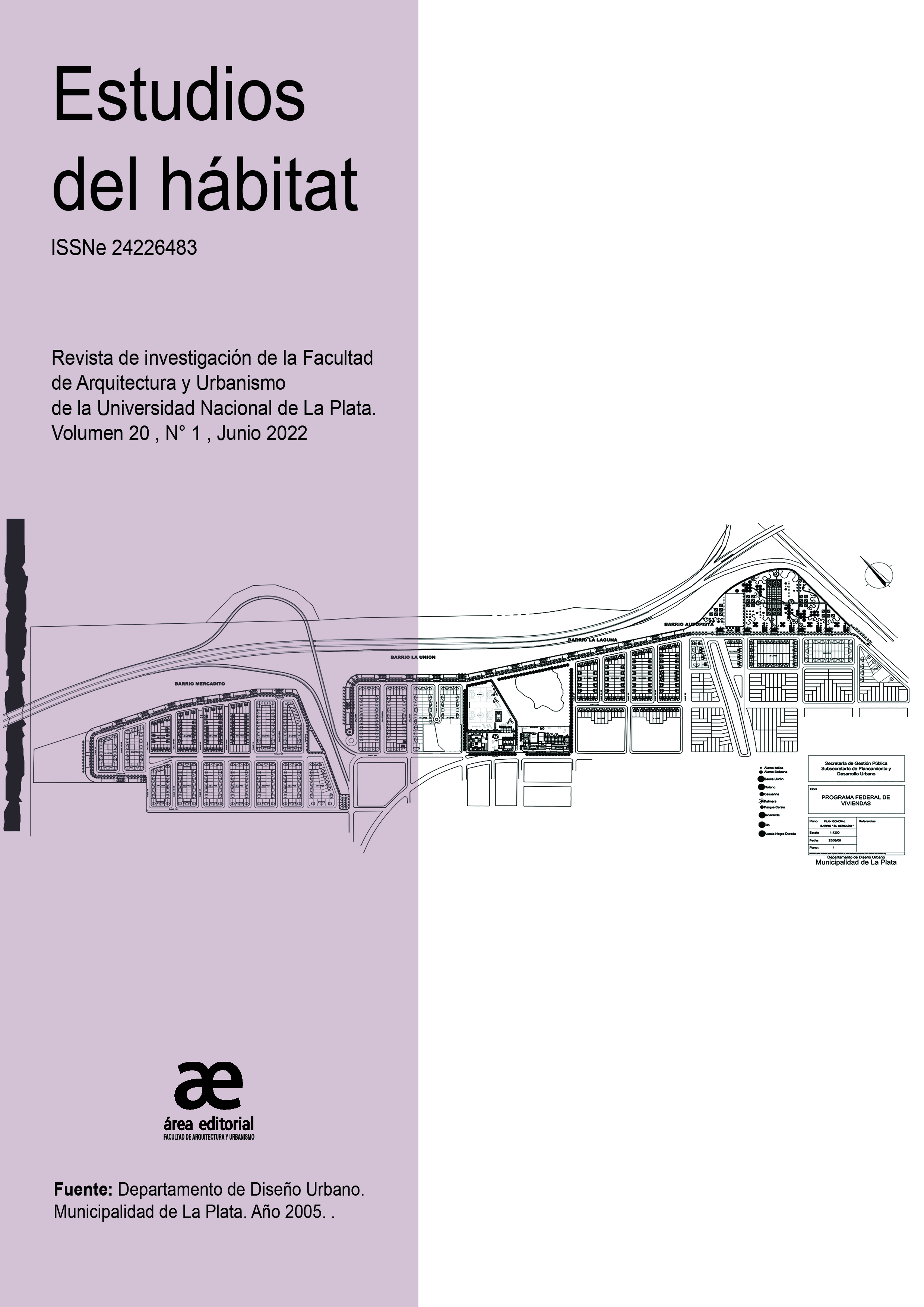Private investment in distributed generation of photovoltaic solar energy: comprehensive evaluation using a deterministic model
A case study
DOI:
https://doi.org/10.24215/24226483e107Keywords:
solar energy, industry, cost analysis, mathematical modelAbstract
In this work, the development of a technical-economic and environmental analysis is presented in order to estimate the potential of photovoltaic solar energy generation in the agro-industry case. Through a survey of the company's property, the annual consumption of energy in agricultural irrigation is characterized, concluding that it represents 90% of the firm's energy costs. A deterministic mathematical model of a policrystalline material solar cell subjected to the environmental conditions of solar irradiance and ambient temperature of the study area is applied, with which the current, voltage and power output data are obtained. Once the potential for photovoltaic solar energy generation is known, cell and panel arrangements and net investment costs are estimated. On the other hand, the discount rates are defined using the CAPM and WACC methodologies to apply in the flow of funds of the pure project and the 50% leveraged project with the French amortization system. The results obtained indicate a potential for photovoltaic solar generation strongly conditioned in a negative way by macroeconomic variables that could explain the disincentive in private investment in distributed generation.
Downloads
Metrics
References
Banco Mundial (2022). Datos. Emisiones de Dióxido de Carbono Equivalente. https://datos.bancomundial.org/
Comisión Europea (2008). Planning and Installing Photovoltaic Systems. A guide for installers, architects and engineers. Earthscan.
Confederación General Empresaria (2022). Informes económicos y empresarios. CGERA. http://www.cge-ra.org/V16/informes-economicos-y-empresarios/
Dumrauf, G. (2003). Finanzas Corporativas. Editorial Grupo Guía S.A.
Energía San Juan (2020). Encuadre Tarifario. http://www.energiasanjuan.com.ar/
Ente Vasco de la Energía (2020). Energy and Savings. https://www.eve.eus/?lang=en-gb
Gitman, L. y Zutter, C. (2012). Principios de Administración Financiera. (2da ed.). Editorial Pearson.
Granda Gutiérrez, E. et al (2013). Modelado y Simulación de celdas y paneles solares. Congreso Internacional de Ingeniería Electrónica 35, 17-22.
Grossi Gallegos, H. y Righini, R. (2007). Atlas de Energía Solar de la República Argentina. SECyT, Dirección Nacional de Proyectos Especiales.
IRAM (1996). Acondicionamiento térmico de edificios. Clasificación bioambiental de la República Argentina (IRAM 11603).
International Energy Agency (IEA; 2022). Data and Statistics. https://www.iea.org/data-and-statistics?country=WORLD&fuel=CO2%20emissions&indicator=CO2%20emissions%20by%20energy%20source
Mascaros Mateo, V. (2015). Instalaciones Generadoras Fotovoltaicas. Un cambio hacia la sostenibilidad. Paraninfo.
Ministerio de Desarrollo Productivo (2022). Factor de Emisión. https://www.argentina.gob.ar/produccion/energia/energia-electrica/estadisticas/informes-estadisticos-del-sector-electrico
Ministerio de Energía y Minería de la Nación Argentina (2022). Datos y Estadísticas. https://www.argentina.gob.ar/energia/datos-y-estadisticas
Navntoft, C. y Cristófalo, M. (2019). Guía del Recurso Solar. Buenos Aires, República Argentina. https://www.argentina.gob.ar/sites/default/files/guia_del_recurso_solar_anexos_final.pdf
Organization of the Petroleum Exporting Countries (OPEC; 2017). Natural gas proven reserves by country. https://www.opec.org/library/Annual%20Statistical%20Bulletin/interactive/current/FileZ/XL/T32.HTM
Perpiñán, L., Colmenar Santos, A. y Castro Gil, M. (2012). Diseño de Sistemas Fotovoltaicos. Promotora General de Estudios S.A.
Ramos Sanz, A. I. (2020). Valuación de proyectos de inversión en eficiencia energética en PyMEs: estudio de casos firma: VC S.A. [Tesis de Maestría. Universidad Nacional de Cuyo. Facultad de Ciencias Económicas]. Biblioteca Digital / UNCUYO. https://bdigital.uncu.edu.ar/17100
Revista Petroquímica (2018). Para cubrir los costos energéticos, las PyMEs debe multiplicar sus ventas por 14. https://www.revistapetroquimica.com/para-cubrir-los-costos-energeticos-las-pymes-deben-multiplicar-sus-ventas-por-14/
Sánchez Fraile, M. (2019). Desarrollo de una herramienta para el modelado del comportamiento eléctrico de células solares [Tesis Final de Grado, Universidad de Alcalá], Ebuah. Biblioteca Digital de la Universidad de Alcala. https://ebuah.uah.es/dspace/bitstream/handle/10017/39366/TFG_Sanchez_Fraile_2019.pdf;jsessionid=512C04746BC15882B8A2F930065FF4C5?sequence=1
Syal, S. y MacDonald, E. (2020). Quantifying the uncertainty of solar photovoltaic Soft costs in the cost of renewable energy spreadsheet tool (CREST) model. Proceedings of the Design Society: DESIGN Conference, 1, 2157-2166. https://doi.org/10.1017/dsd.2020.171
Downloads
Published
How to Cite
Issue
Section
License
Copyright (c) 2023 Dra. Alba Ramos Sanz

This work is licensed under a Creative Commons Attribution-NonCommercial-NoDerivatives 4.0 International License.
Acorde a estos términos, el material se puede compartir (copiar y redistribuir en cualquier medio o formato) y adaptar (remezclar, transformar y crear a partir del material otra obra), siempre que a) se cite la autoría y la fuente original de su publicación (revista y URL de la obra), b) no se use para fines comerciales y c) se mantengan los mismos términos de la licencia.








.jpg)

















